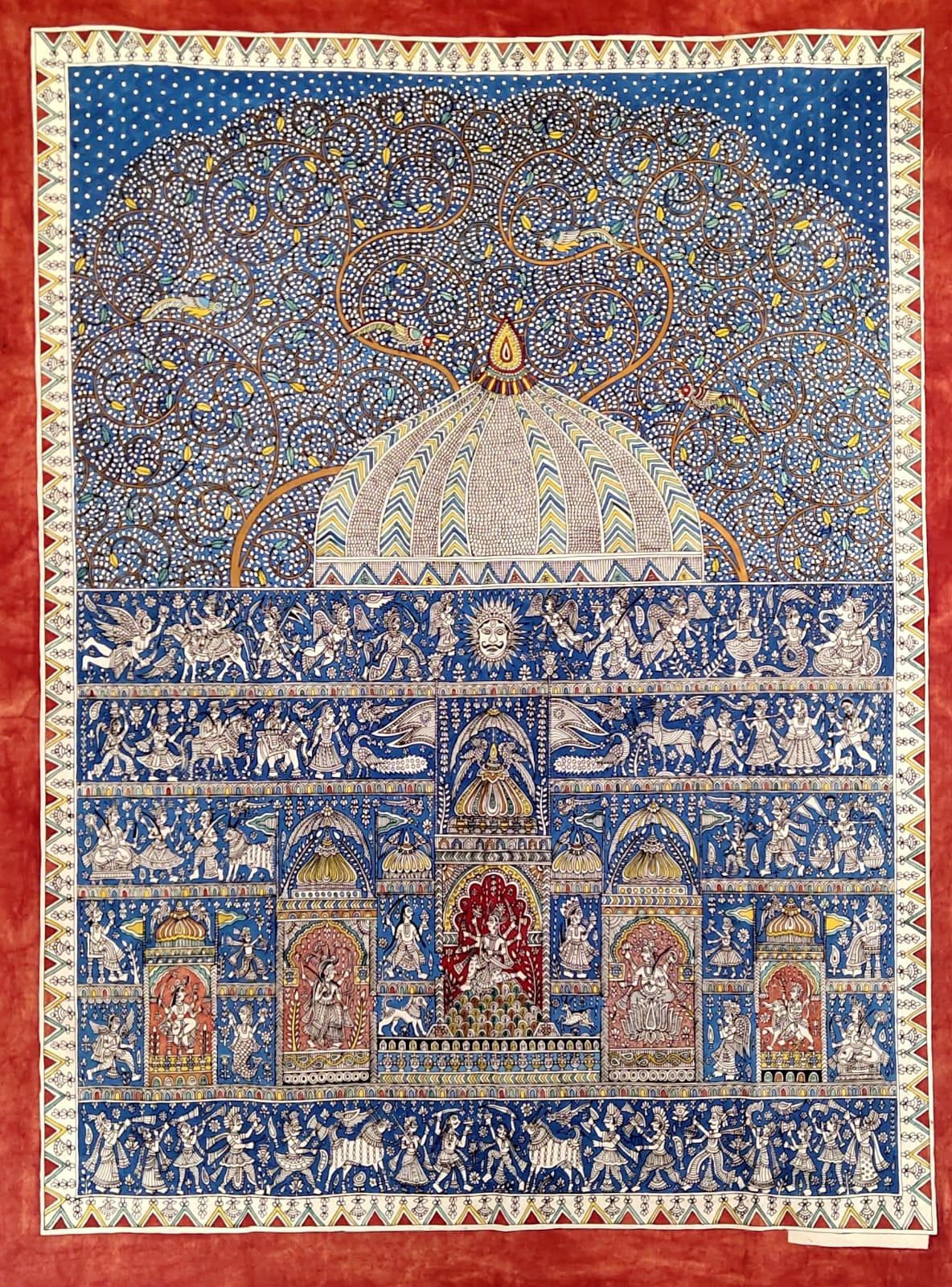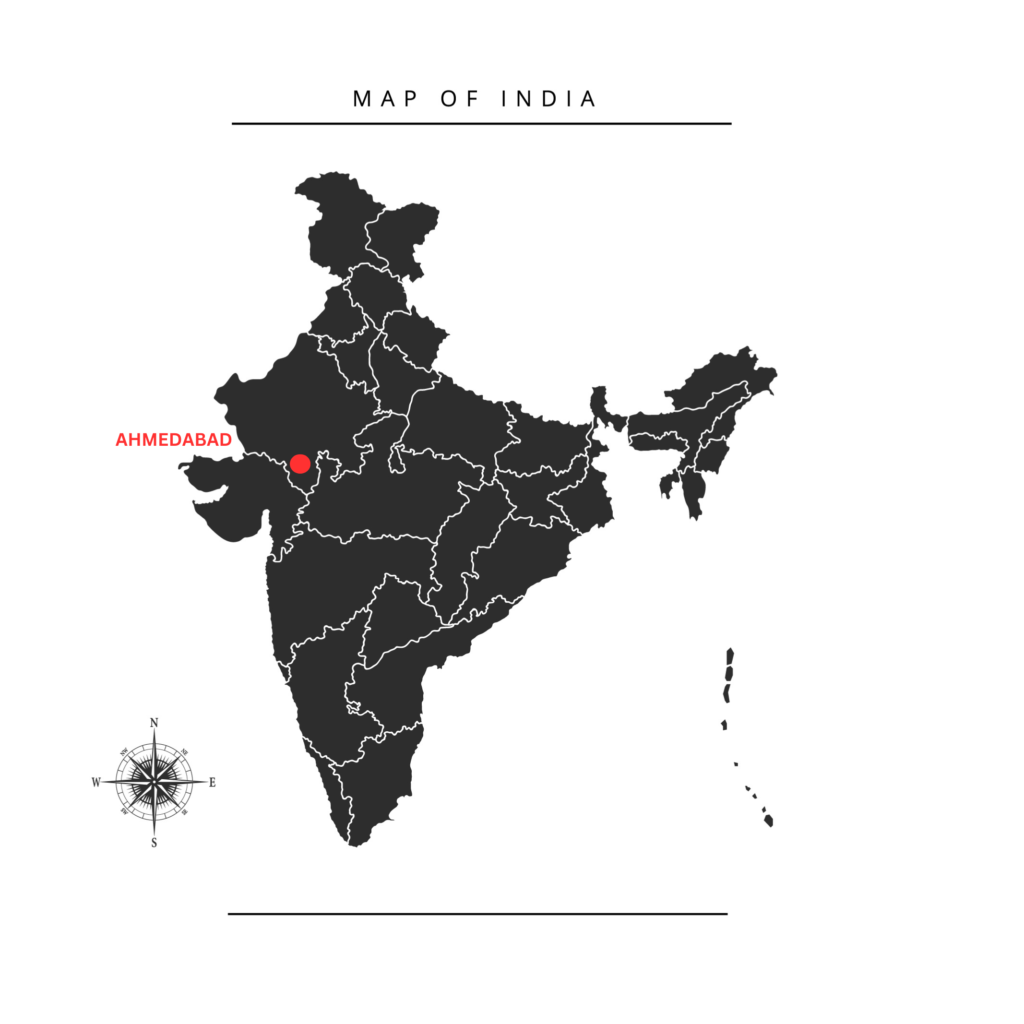MATA NI PACHEDI
Mata ni Pachedi stands as a cherished traditional art form hailing from the vibrant land of Gujarat, India. This intricate craft flourishes through the deft application of natural dyes and colors on cotton canvases. These textiles serve as sacred shrines, adorned with elaborate designs that narrate the diverse manifestations of the goddess and the mythological narratives that surround her. The palette is bold and vivid, dominated by hues of red, black, and yellow, evoking a visual symphony that resonates with spirituality.


ABOUT MATA NI PACHEDI
Creating Mata ni Pachedi is a laborious yet meticulous process. The canvas undergoes careful cleansing and bleaching before the design takes form. Charcoal or chalk sketches outline the goddess’s ethereal presence, which is then enlivened using both hand-painting and wooden block techniques. The artistic journey crescendos as natural dyes sourced from turmeric, indigo, pomegranate, and mineral pigments like iron oxide and cinnabar are layered, infusing each stroke with cultural richness.
HISTORY
This art form traces its origins to the resilient Vaghari community, a nomadic tribe whose spiritual journey was shaped by the societal restrictions of the caste system. Denied access to temples for their worship of the Mother Goddess (Mata), these ingenious artisans embarked on a visual pilgrimage by adorning fabrics with their deities. This gave rise to the poignant name Mata ni Pachedi, meaning “behind the goddess” in Gujarati.
Originally, Mata ni Pachedi adorned altars in devotion to the divine. However, its allure has transcended the confines of sacred spaces. This traditional gem has evolved into a beacon of Indian folk art, capturing the imagination of contemporary artists who fuse innovation with heritage. As they breathe life into this cherished tradition, these artisans continue to paint a vibrant tapestry that weaves the threads of spirituality, creativity, and cultural legacy.



